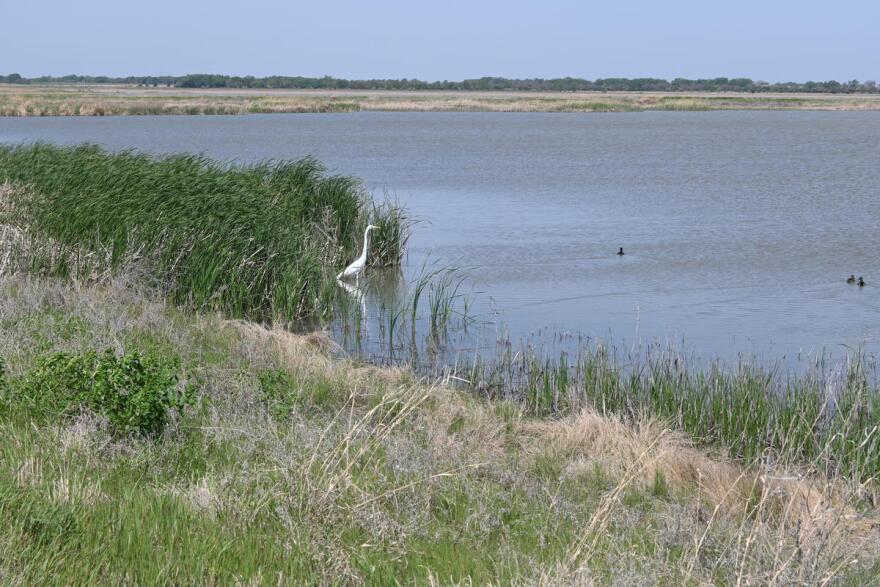Land-locked Kansas is not where you might expect to see a squadron of pelicans or a fling of sandpipers.
But a couple of times a year, we become home to thousands of migratory birds making the long journey north or south. And when that happens, there’s no better place for bird watching than the salt marshes at Quivira National Wildlife Refuge.

It’s the spring migration and local birds are joined by thousands of fellow travelers coming from all points south. About 350 species pass through North America each year, and more than 340 of them will spend some time in Quivira.

Beccy Tanner has written about Kansas for more than four decades and knows — and loves — all things Kansas. She said that Quivira is her favorite place.
“The diversity of wildlife, of birds that come through this area, is mind blowing,” she said. “You will always see something when you come out here.”

The Quivira Wildlife Refuge, about 30 miles west of Hutchinson, covers more than 22,000 acres with two vast salt marshes, areas of prairie and sand dunes.

The shallow, salty marshes — remnants of our geological past — are filled with food, attracting migratory birds from as far away as South America.

There’s more to see than just birds: In the spring, you can sometimes see new fawns, possums, raccoons, bobcats. You can see black-tailed prairie dogs, red foxes and groups of turtles sunning themselves on logs or along the shore.
The best time to visit Quivira during the spring and fall migrations, but Tanner says it’s a fascinating place no matter when you go.
"One of the things I love about Quivira is it’s so open out here and even though you may occasionally run across people, still there are many times when you come out here and the show is just for you," she said, "just for you alone."
Copyright 2021 KMUW | NPR for Wichita. To see more, visit KMUW | NPR for Wichita.




